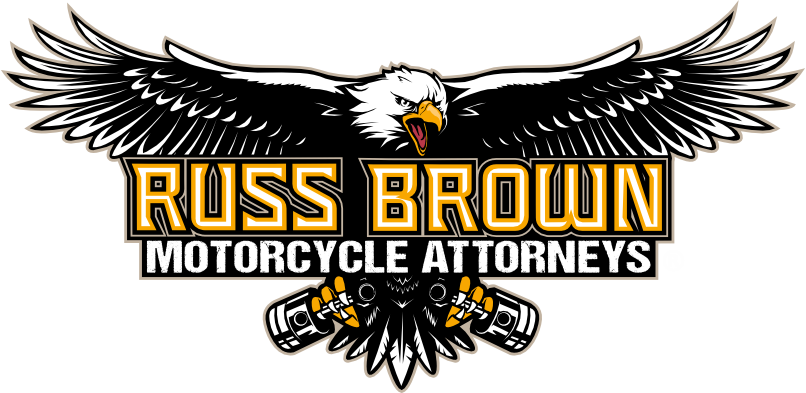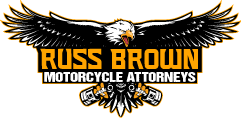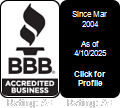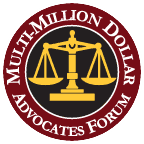Pennsylvania Motorcycle Accident lawyers
Contact Us Today For a Free Consultation!
Motorcycle Accident Attorneys: Russ Brown Motorcycle Attorneys® have been fighting for injured motorcyclists for decades. We are experts in motorcycle accidents and have carefully chosen local, independent counsel across the country to help guide your claim with free legal advice, even if you do not need an attorney. This can maximize your recovery. If you want justice and compensation for your injury, pain and suffering, call today for your free consultation.
Contact Us
Russ Brown Motorcycle Attorneys® are the ultimate expert source for your questions and help after a motorcycle accident. As motorcycle accident lawyers who ride, we have the practical knowledge to properly assess your bike accident and overcome a bad police report or conflicting witness’ account of your collision. Because of the sheer volume of cases that we have handled for injured riders, we have more influence and a higher level of success battling insurance companies than our competitors. Even if your case is imperfect, our Pennsylvania motorcycle accident attorney near you has an incredible track record and can give practical advice on how best to proceed. Unfavorable obstacles do not necessarily mean the end of your case—we often take cases that other lawyers turn down. With the added clout and advantage of the Riders Helping Riders program cooperative, your Pennsylvania motorcycle accident lawyer also has access to many cutting edge strategies and decades of motorcycle specific experience. Beyond pursuing claims for your injuries and bike damage, we may seek compensation for your pain and suffering, time lost of work, loss of use, even tattoo repair caused by road rash, and more.
Pennsylvania is one of the top motorcycle States in the US. Unfortunately, this also means a high number of uninsured bikers and serious accidents. If you have been injured in a bike crash make sure you have an experienced motorcycle injury lawyer representing you. We see instances all the time where injured riders listen to a friend or relative who is not familiar with motorcycle cases and settle too quickly with their insurance company for far less than their case is worth. It is better to get free legal advice from an expert Russ Brown motorcycle injury attorney in the beginning, before it is too late.
If you have been injured in a biking accident, make sure you have the experience of Russ Brown Motorcycle Attorneys® on your side. Motorcycle accidents and the insurance issues associated with them can make accident claims complicated. Insurance companies are well aware of this and will take advantage of any perceived loophole. We fully investigate every aspect of your accident and insurance coverage and won’t let them write you off for less than you deserve. We at Russ Brown Motorcycle Attorneys® fight to get the maximum for your damages as well as pain and suffering. If you are laid up in the hospital, we don’t want you to worry about anything other than recovery. Let Russ Brown/Riders Helping Riders deal with your insurance agency. Whether you have full coverage or are an uninsured biker, call the Riders Helping Riders motorcycle injury lawyers at 1-800-4-BIKERS.
Even when motorcyclists are careful, accidents can still happen. If you or someone you know has suffered an injury in a motorcycle crash anywhere in Pennsylvania, you should contact a motorcycle accident injury attorney immediately.
The skilled biker lawyers at Russ Brown Motorcycle Attorneys® can help by protecting your rights and working to win financial compensation to cover the costs of medical care, therapy and rehabilitation, lost income, and other long-term needs that your family may experience following a serious motorcycle accident.
Riding in Pennsylvania
Between the two major cities of Pittsburgh and Philadelphia there are miles of riding country with scenic views of the Pocono Mountains, Lake Erie coastline, and the historic town of Gettysburg. The Keystone state offers hardy motorcyclists an opportunity to ride through all four seasons of the year: whether you’re enjoying the Greensburg Donegal Loop or the Kettle Road. You can enjoy scenery ranging from urban sprawl to remote backwoods, all on the same day trip.
Each year, thousands of motorcyclists flock to Pennsylvania roads for some of the largest rallies like Roar on the Shore in Erie, sponsored by Russ Brown Motorcycle Attorneys®. Along with the fun and celebrating comes some added congestion and a few motorcycle crashes and mishaps, which in turn draws increased attention from motorcycle safety authorities. To avoid scrutiny and problems, it is essential that all motorcyclists know and practice Pennsylvania motorcycle safety laws. Here are some of them:
Pennsylvania Motorcycle Safety Laws, Sub-chapter B – SECTION 3521-3526
- Helmets are optional for riders 21 or older who either (1) have been motorcycle-licensed for at least two years, or (2) have completed an approved motorcycle safety education course; a passenger is exempt if 21 or older; helmet speakers may be used only for the purpose of communication, not for entertainment
- Eye protection:Mandatory for all riders, including passengers
- Although turn signals are not required, motorcycle equipment must include two mirrors (right and left) for motorcycles built after April 1, 1977; a muffler is required to comply with Pennsylvania’s speed-based noise scale up to a maximum sound limit of 88 decibels
- There is no age restriction on passengers; however, a passenger seat and passenger footrests are necessary if passengers are carried
- Handlebar height is unregulated in Pennsylvania, unlike many other states. There are no restrictions.
- Motorcycle rider safety education is state-funded and available to eligible riders
- State liability insurance is required with a minimum coverage limits set at 15/30/5
- Riding motorcycles two abreast is allowed, yet Pennsylvania outlaws the risky practice of “lane splitting,” where a bike shares a lane with a car or truck, or passes between rows of full-size vehicles
- Regular motorcycle-safety inspections are mandated in order to encourage compliance with all Pennsylvania motorcycle safety laws
- Helmet speakers can be used only for communication purposes
- Pennsylvania minimum insurance requirements are 15/30/5
*Please check your local PA DMV for a full list of up to date Pennsylvania motorcycle laws and regulations*
PENNSYLVANIA MOTORCYCLE ACCIDENT ATTORNEY FAQ
What is the process for a lawsuit when someone has been involved in a traffic collision in Pennsylvania?
While we sometimes file a lawsuit immediately, we typically attempt to resolve the case informally with the insurance company first. Once our firm is hired, we obtain the traffic collision report, perform an independent investigation and inform the insurance companies that we are representing the injured party. We also send evidence preservation letters to the other driver to ensure all vehicle data, recordings, and videos are retained.
Depending on the accident circumstances and location, we may dispatch a private investigator to gather witness statements and look for surveillance footage. In certain cases, we send an accident reconstruction expert to the scene.
We monitor our client’s medical treatment and, once completed, collect all medical records and employment documents if the client missed work. Oftentimes, we talk with the client’s doctor and will obtain reports concerning future medical treatment and income loss. Next, we compile a demand package with all relevant documents, meet with our client about the demand and then submit it to the insurance company to begin negotiations.
If a settlement cannot be reached, we file a lawsuit, initiating the discovery phase – which includes depositions and written discovery. Most cases settle during mediation after this process. If not, we proceed to trial.
In Pennsylvania, how long does the Motorcycle Accident Attorney process take from beginning to end?
The duration of a motorcycle accident case varies significantly depending on several factors, including liability disputes, the severity of injuries and recovery time, and whether a lawsuit is filed.
When Should You Contact a Pennsylvania Motorcycle Accident Lawyer After a Crash?
Call us right after contacting 911—the sooner you reach out, the better we can protect your rights.
Can a Motorcycle Accident Victim Seek Compensation from the Victims’ Fund After a Hit-and-Run?
Eligibility depends on the specific criteria outlined by the Pennsylvania Victims Compensation Assistance Program. In cases of fatal injuries, the fund may provide loss of earnings for a limited period for a surviving family member and up to $6,500 to cover funeral and burial expenses for the victim’s family.
If compensation is later recovered from the at-fault driver (such as through a settlement or judgment), the fund may require reimbursement. However, awards can vary or be reduced depending on the circumstances of the case.
What is a Tort Claim, and Why Are Most Motorcycle Accident Cases Considered Tort Claims?
A tort claim arises when someone’s careless actions (or failure to act) causes harm to another person, creating legal liability. Since most motorcycle accidents result from another party’s negligence – like a driver failing to yield or texting while driving – these injury cases are typically pursued as tort claims seeking compensation for the victim’s damages.
How Does Pennsylvania’s Modified Comparative Negligence System Affect Motorcycle Accident Claims?
Pennsylvania follows a modified comparative negligence system with a 51% bar. This means an injured motorcyclist can recover damages only if they are found 50% or less at fault for the accident. However, their compensation will be reduced by their percentage of fault. If they are deemed 51% or more responsible, they are barred from recovering any damages.
What Is the Motorcycle Accident Statute of Limitations in Pennsylvania?
In Pennsylvania, the standard statute of limitations for motorcycle accident cases is two years from the date of the crash. However, there are critical exceptions, especially when a government entity is involved.
Government Claims Have Much Shorter Deadlines
If the at-fault party was a government employee (such as a police officer, transit worker, or road maintenance crew) or if the accident was caused by dangerous road conditions (potholes, poor signage, faulty lighting, etc.), the injured motorcyclist must act quickly:
- File a formal notice of the claim within six months of the accident
- Even if missed, a notice of late claim may be still be submitted but acceptance of the claim is not guaranteed. Our attorneys can provide guidance on this issue if it occurs.
Federal Government Claims Are Different
Cases involving federal agencies (like the USPS or other federal employees) follow separate, complex rules.
Why You Need a Lawyer:
Given the strict deadlines and procedural hurdles, consulting a Pennsylvania motorcycle accident attorney immediately is crucial to protect your rights—whether you’re dealing with a private party, local government, or federal entity.
What Are the Most Common Motorcycle Accident Injuries in Pennsylvania?
Motorcycle crashes often result in severe injuries due to riders’ limited protection. Based on our experience handling these cases, the most frequent injuries we see include:
Most Frequently Occurring Injuries:
- Road rash (abrasions from sliding on pavement)
- Broken bones (especially wrists, femurs, tibias, and ankles)
- Shoulder and knee injuries
- Spinal cord damage
- Traumatic brain injuries (even with helmets)
- Skull fractures
- Severe lacerations
- Internal organ damage
- Permanent disfigurement
These injuries range from painful but recoverable to life-altering permanent conditions. Unlike car occupants, motorcyclists have no metal frame or airbags to absorb impact, making even “minor” crashes potentially devastating.
The severity often depends on crash factors like speed, road conditions, and whether the rider was ejected from the bike. Many victims require multiple surgeries, long-term rehabilitation, and may never fully recover.
Do I need to wear a Motorcycle helmet in Pennsylvania?
–Required for ALL riders under 21 – No exceptions.
–Riders 21+ may ride without a helmet IF:
- They’ve held a motorcycle license for at least 2 full years, OR
- They’ve completed a PennDOT-approved safety course.
Eye Protection Rules
– Mandatory for ALL riders & passengers – Must use:
- Goggles
- A face shield (if helmet is worn)
- Other approved protective eyewear
Helmet Requirements
– Must be DOT-certified (U.S. Department of Transportation standard)
– Must display:
- DOT compliance sticker
- Manufacturer’s name, model, size, and production date
Penalties for Violations
– Fines & legal consequences for riding without a helmet when required.
Exceptions to the Rule
– Exemptions apply to:
- Operators/passengers of enclosed three-wheeled motorcycles or autocycles
- Bicycle riders under 12(must wear a bike helmet)
- Children in bicycle trailers or child seats
Why Compliance Matters
- Safety: Helmets can reduce severe head injuries.
- Legal Protection: Violations can impact accident claims.
- Insurance Risks: Riding without proper gear may affect coverage.
How Pennsylvania’s Helmet Law Affects Riders Without DOT-Approved Helmets After a Crash
Pennsylvania’s helmet law creates important legal consequences for injured riders:
- Potential Reduction in Compensation
If a rider required to be helmeted suffers a head injury while not wearing a helmet or wearing a non-DOT helmet, the jury or court may assign them partial fault (comparative negligence). This could reduce their compensation by the percentage they’re found responsible – for example, a 20% fault finding means 20% less recovery. - Critical Legal Defense Opportunity
Our Pennsylvania motorcycle attorneys work with helmet safety experts to challenge these assumptions by proving either:- The injury would have occurred even with a DOT-approved helmet, or
- The helmet met safety standards despite lacking DOT certification
- Full Recovery Still Possible
When we can demonstrate the helmet violation didn’t cause or worsen the injury or that the client was not required to wear a helmet, a rider may still recover 100% of their damages.
This nuanced approach helps protect riders from unfair blame while acknowledging the law’s safety purpose. The key is immediate investigation by attorneys who understand helmet technology, the helmet laws application in injury cases and Pennsylvania’s comparative negligence system.
How Is Compensation Calculated for Motorcycle Accident Victims in Pennsylvania?
Motorcycle crash victims may recover damages for:
- Property damage(repair or replacement of the bike, gear, and other belongings)
- Medical expenses(past and future treatment, surgeries, therapy, and medications)
- Lost wages(past and future income due to missed work or disability)
- Pain and suffering(physical and emotional distress)
- Loss of life’s pleasures (compensation for changes in activities you enjoyed)
- Scarring and disfigurement (compensation for the scar or disfigurement itself) and
- Loss of Consortium (claim for losses of a spouse)
What Are the Most Common Causes of Motorcycle Accidents with Liable Defendants?
Motorcycle crashes often occur due to other drivers’ negligence. The two most frequent—and dangerous—scenarios involve:
1. Left-Turning Vehicles (The #1 Motorcycle Killer)
This happens when an oncoming car turns left directly into a motorcyclist’s path. Drivers often:
- Fail to see the motorcycle due to its smaller size
- Misjudge the bike’s speed or distance
- Assume they have enough time to turn
These collisions are especially deadly because they’re often head-on or broadside impacts at high speeds.
2. Lane-Change Crashes (Blind Spot Dangers)
Many riders are hit when drivers:
- Don’t check blind spots before merging
- Ignore turn signals from motorcycles
- Drift into another lane while distracted
Other frequent but less common causes include:
- Rear-end collisions (cars failing to stop in time)
- Dooring accidents (parked cars opening doors into bike lanes)
- Road hazards (potholes, debris, or poor road design)
Why These Crashes Happen:
Motorcycles are harder to spot than cars, and many drivers aren’t trained to watch for them. Even a split-second distraction can be fatal for riders.
Understanding “At Fault” in Pennsylvania Motorcycle Accident Cases
In Pennsylvania, “at fault” is a legal term for negligence—meaning someone failed to act with reasonable care, causing harm to another person.
The 3 Key Elements of Fault (Negligence):
- Duty of Care: Every driver must operate their vehicle safely and follow traffic laws.
- Breach of Duty: The driver violated that duty (e.g., running a red light, speeding, or failing to yield).
- Causation: The breach directly caused the motorcyclist’s injuries and damages.
How Fault Affects Motorcycle Accident Cases:
- Determines Liability: The at-fault party (or their insurance) is responsible for compensating the injured rider.
- Impacts Compensation: Pennsylvania’s pure comparative negligence rule means a motorcyclist’s recovery can be reduced by their own percentage of fault – but they can still recover damages even if partially to blame.
- Critical in Disputes: Proving fault often requires evidence like police reports, witness statements, videos and accident reconstruction.
Example:
If a car driver turns left without checking for oncoming motorcycles and hits a rider, they breached their duty of care—making them at fault for the crash.
Understanding fault is essential because it shapes the entire legal and insurance process after a motorcycle accident. An experienced attorney can help prove negligence and maximize your compensation.
Hit-and-Run Motorcycle Accidents: Your Rights and Recovery Options
After a hit-and-run collision, motorcycle victims still have pathways to compensation – but quick action is essential. Here’s what you need to know:
Protecting Your Rights After a Hit-and-Run:
- Insurance Coverage is Critical
- Uninsured Motorist (UM) coverage becomes your primary recourse
- We strongly recommend:
- Minimum $100,000 in UM coverage
- Ideally $250,000+ for serious injury protection
- This covers medical bills, lost wages, pain/suffering, loss of life’s pleasures, scarring and disfigurement, and loss of consortium
- Evidence Collection Strategies
- Video Evidence:
- Helmet cams or handlebar-mounted GoPros provide crucial ID evidence
- Dash cams (if installed) may capture the fleeing vehicle
- Immediate Scene Investigation:
- Document nearby security cameras (storefronts, traffic signals, homes)
- Record witness statements and contact information
- Photograph skid marks, vehicle debris, and road conditions
- Video Evidence:
- Legal Action Options
- Police can pursue criminal charges if driver is identified
- Civil claims against recovered drivers or through your UM policy
- Potential claims against third parties (like municipalities for poor lighting)
Why Quick Action Matters:
- Surveillance footage is often overwritten within days
- Witness memories fade quickly
- Physical evidence at the scene disappears
- Notification to your UM insurer must be made soon after the crash
We’ve successfully recovered compensation for numerous hit-and-run victims through these methods. The key is acting immediately to preserve all possible evidence while pursuing your UM claim.
Liability in Pennsylvania Motorcycle Lane-Sharing Accidents
Pennsylvania law doesn’t provide a simple answer for lane-sharing collisions between motorcycles because liability depends entirely on the specific circumstances of each case. Here’s what determines fault:
Key Factors in Determining Liability:
- Actions of Each Rider:
- Who initiated the lane-share?
- Was either the rider speeding or riding recklessly?
- Did one motorcycle suddenly change position?
- Road Conditions:
- Was there adequate space for safe sharing?
- Were there visibility issues (curves, hills, weather)?
- Pennsylvania’s Comparative Negligence Rule:
- Both riders could share fault (e.g., 60%/40%)
- Compensation would be reduced by each rider’s percentage of fault
- Even if mostly at fault, a rider could recover some damages
Why These Cases Are Complex:
- No clear “right of way” rules for lane-sharing
- Often comes down to witness testimony and accident reconstruction
- Insurance companies frequently dispute these claims
What Victims Should Do:
- Document the scene thoroughly (photos, video)
- Get witness contact information
- Consult an attorney immediately – these cases require careful investigation
The bottom line: There’s no automatic presumption of fault in motorcycle lane-sharing accidents. Each case requires individual analysis of the facts and evidence.
Why You Need a Motorcycle Accident Lawyer Before Talking to Insurance Companies
Insurance companies are skilled at minimizing payouts – and they’ll use every tactic to undermine your claim. Here’s why contacting an attorney immediately is critical:
How Insurance Companies Take Advantage of Unrepresented Riders
- They record statements designed to twist your words (e.g., “You weren’t speeding, right?”)
- They pressure quick settlements before injuries are fully diagnosed
- They deny claims by arguing gaps in medical treatment or “pre-existing conditions”
Common Mistakes That Destroy Cases
We’ve seen riders unintentionally sabotage their claims by:
- Delaying medical care→ Letting insurers argue injuries weren’t serious
- Failing to preserve evidence→ No photos of wounds/bike damage, lost surveillance footage
- Not filing reports→ No police report or desk report weakens credibility
- Handling towed bikes improperly→ Storage fees pile up; evidence is lost
- Speaking to adjusters alone→ Admitting even partial fault reduces compensation
What a Lawyer Does Immediately
- Handles all insurer communications to protect your rights
- Documents evidence(witnesses, cameras, accident reconstruction)
- Ensures proper medical documentation for maximum compensation
- Advises on legal deadlines(e.g., tow yard timelines, statute of limitations)
The Bottom Line:
Insurance companies profit by paying you less. An experienced motorcycle attorney fights to get you full compensation while you focus on recovery.
Why You Should Never Admit Fault After a Motorcycle Accident – Even If You Think You’re to Blame
- Very few people have the proper training to Judge accurately
- Crash dynamics are complex and often counterintuitive
- Example: We had a rider who thought he was at fault for T-boning a car – until we proved the driver illegally turned left across his right-of-way
- Trauma Clouds Judgment
- Adrenaline and shock distort memory
- What feels like “your fault” in the moment may be completely wrong
- Critical Evidence Emerges Later
- Witnesses often see things differently
- Surveillance footage may reveal the truth
- Accident reconstruction can prove what really happened
- Legal Consequences
- Any admission can be used to reduce/deny your claim
- Pennsylvania’s comparative negligence system means even partial admissions hurt your case
What to Do Instead:
- Focus on safety and medical care
- Document the scene (photos, witness info)
- Say only: “I’m not discussing fault until I consult my attorney”
- Let investigators and experts determine responsibility
Remember: Insurance adjusters are trained to turn polite apologies into admissions of guilt. Stay silent on fault – your future compensation depends on it.
Is Lane Splitting Legal in Pennsylvania?
Short Answer: No, lane splitting is not permitted in Pennsylvania. However, the state does allow lane filtering under specific conditions.
Key Differences Between Lane Splitting and Lane Filtering
| Lane Splitting | Lane Filtering |
| ❌ Illegal in PA | ✅ Permitted under strict rules |
| Involves passing moving vehicles in the same lane or between lanes | Only allows passing stopped vehicles in the same lane or between lanes |
| Typically done at or near traffic speed | Must be done at ≤ 15 mph |
| No restrictions on road type | Prohibited on freeways |
| N/A | Only allowed on roads with: • ≥ 2 lanes in the same direction • Speed limit ≤ 45 mph |
| N/A | Must be done safely (riders bear full responsibility) |
Why These Rules Matter
- Safety Risks: Lane splitting at high speeds increases crash risks.
- Legal Consequences: Violating filtering rules could make you liable in an accident.
- Insurance Impact: Even legal filtering could be disputed by insurers after a crash.
If you’ve been in a motorcycle accident involving lane filtering or have questions about Pennsylvania’s laws, consult an experienced PA motorcycle accident attorney to protect your rights.
Key Takeaways:
✔ Lane splitting = Always illegal
✔ Lane filtering = Legal only under strict conditions
✔ Speed, road type, and traffic status determine legality
Looking for the best Pennsylvania Motorcycle
Attorneys near you?
Harrisburg
Philadelphia
Pittsburgh
Scranton
Pennsylvania Location:
All Pennsylvania cases will be referred to & handled by our affiliate of 35 years, Shollenberger Januzzi & Wolfe, LLP.
Enola
RUSS BROWN Trusted Affiliate: SJW Law
2225 Millennium Way
Enola, PA 17025
Motorcycle Accident Attorneys
in Other States
We Care
We Win!










